New Light on the Master of Saint Giles, identified as Gauthier de Campes
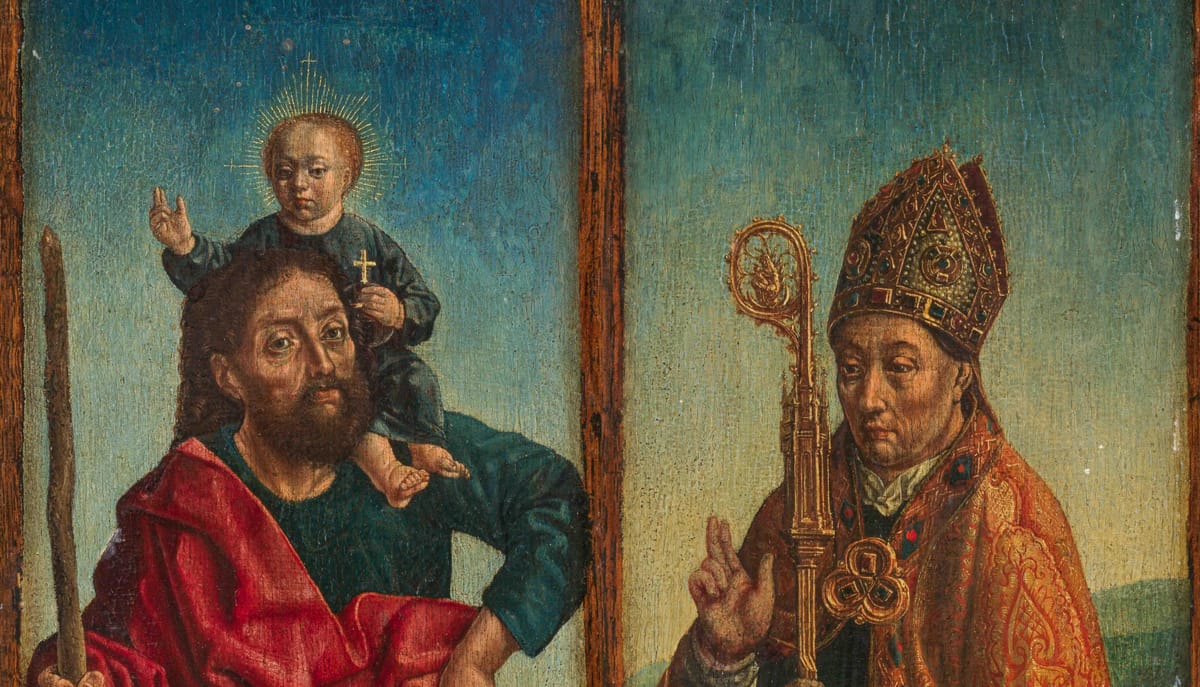
Recently two small panels were sold at auction at Artcurial Beurret Bailly Widmer. These panels, Saint Christopher and a Holy Bishop, were painted by the Master of Saint Giles and originally formed the wings of a triptych. While researching these lots I realized that state of academic research of the Master of Saint Giles is relatively detailed and plentiful for a 15th century artist, but not widely distributed online and even less so in English. The Master of Saint Giles is an under-appreciated and important Franco-Flemish artist, who belongs in the same category of first-rate artists as Juan de Flandes, Michel Sittow and Jean Hey. Since 2001, art historians in the French-speaking world have uncovered much information about this artist, including his identity: Wouter van Campen (Flemish) or Gauthier de Campes (French), identified by Guy-Michel Leproux.
Gauthier de Campes is important for many reasons. His story is part of the legacy of the international extension of the Early Netherlandish school to the rest of Europe, in this case France. The evolution of his artistic styles from gothic to early mannerist around the turn of the 16th century demonstrates the changing artistic currents of the time. He played a large role in bringing Antwerp mannerism to France. He possessed a unique and distinct hybrid style bearing influence from artists like Hugo van der Goes, Gerard David, Simon Marmion, Dirck Bouts, The Master of the Legend of Saint Lucy and others, while retaining originality that underscored his autonomy in style and technique. He worked across multiple media and collaborated with leading artists in cities around the Hapsburg Netherlands and France. His detailed paintings document lost medieval architecture and art in backgrounds and cityscapes. And ultimately, the quality of his finest works rivals that of the greatest artists of the period.
I believe that this artist, who has been studied mostly in the French-speaking academic circle, deserves more recognition in the anglophone world, in particular for his broader oeuvre apart from The Mass of Saint Giles altarpiece. And I hope that museums that hold artworks by this artist give them a place on permanent public display that they deserve.
The academic research this blog is based on was conducted by Pierre-Gilles Girault, Frédéric Elsig, Raphaël Villa, Étienne Hamon, Michel Hérold, Guy-Michel Leproux, Raphaële Skupien, Sacha Zdanov, Charles Sterling, Max J. Friedländer and others.
... the Master of Saint Giles, now better known since the panels from the Beurnonville collection have finally become accessible again, belongs, along with the Master of Moulins, Juan de Flandres, and Master Michel, who worked in Spain, to the group of painters who harmoniously combine the observation of nature and the pictorial science of the Dutch in the Latin sense of beauty.
- Max J. Friedländer (translated from French)
Tournai Artistic Dynasty
Gauthier de Campes came from a multidisciplinary artistic family dynasty with heritage in Tournai. Henri De Campes, with whom Gauthier likely had immediate relations with (likely his uncle), is recorded as a stained glass painter, documented between 1473 (when he became a master of the glassmakers guild) and 1496 (when he was recorded as still being active). Jean Decamp was a master goldsmith and "peintre de papier" in Tournai in the 1450s who made things like elaborate banners, flags, golden objects and decorative arts, and bought a house there in 1459. Guerardin (a.k.a. Gerard) de Campes is documented as a glass painter and manuscript illuminator. In 1478 he apprenticed glass painting under Henri, later becoming a master glass painter and manuscript illuminator. In 1488 Guerardin took on an apprentice named Pierre Godefroy. And finally, Bauduin de Campes is documented as a glass maker between 1465 to 1474, having engaged three apprentices in his workshop. All this goes to show that Gauthier was raised in an artistic family dynasty with longstanding roots in multidisciplinary artistic fields on the border between France and the Low Countries.
Bruges Career
Gauthier started his career in Bruges. On September 22, 1480 "Wouterkin van Campen, son of Wouter" was recorded in the archives of the Bruges painters guild of Saint Luke as becoming engaged as apprentice to Jan Fabiaen. In this case, Wouter/Wouterkin van Campen is the Flemish version of Gauthier de Campes. He served as one of 7 apprentices who joined the workshop of Jan Fabiaen between 1470 and 1487, indicating this was an important workshop with a productive output. Indeed, in 1489 Fabiaen would become dean of the Painters Guild of Saint Luke in Bruges.

Interestingly, Jan Fabiaen was originally from Bethune in France and migrated to Bruges. Perhaps the French connection is how he became acquainted with our artist. Jan Fabiaen is one of half a dozen candidates who have been suggested as candidates to be identified with the Master of the Legend of Saint Lucy (see this article by Sacha Zdanov), however this is not widely accepted today and the mainline view is that the identity is rather with Fransoys vanden Pitte. It is still possible however; as Pierre-Gilles Girault notes that there is a tendency to incorporate tapestry elements in the paints of the Master of the Legend of Saint Lucy.
For another option, one could speculate that a productive workshop such as the Master of the Embroidered Foliage could have been the 7-man workshop of Jan Fabiaen. It seems plausible due to the large number of different hands associated with the workshop, and also the fact that some works were very close to the Master of Saint Giles. There aren't 7 different hands in the Master of the Legend of Saint Lucy's oeuvre, although there are probably more than a few. Specifically, Guy-Michel Leproux makes a comparison between the Saint Christopher from the workshop of the Master of the Embroidered Foliage in the Gemäldegalerie Alte Meister in Dresden, and the Saint Christopher recently sold at auction. In any case, although they are clearly similar, it is always hard to tell who is copying whom, and similar compositions exist from other artists as well.

Migration to France
Wouter became a Bruges Master in his own right almost ten years later in May 28, 1490. This was the last time he is documented as Wouter in Bruges - from now on he would be documented in France as Gauthier de Campes. Connecting the dots between Wouter in Bruges and Gauthier in France is a relatively recent academic discovery, after the time of Friedlander and the early art historians. In La peinture à Paris sous le règne de François Ier French art historian Guy-Michel Leproux makes a number of stylistic comparisons between paintings by the Master of Saint Giles and the stained glass and tapestry output of Gauthier de Campes which further suggests these are one and the same artist.
It was during this period, between his later years in Bruges and his early career in France, when he had his most productive output of panel paintings. Among these was the eponymous The Mass of Saint Giles Altarpiece, by far the most widely known masterpiece of the artist. We know that he had several workshop members, as The Mass of Saint Giles shows the work of 3 hands, according to Lorne Campbell.

In France, Gauthier de Campes worked on designs of tapestries and stained glass from about 1500 to 1530. During the 1490s Gauthier would design and possibly paint stained glass windows for the Tournai Cathedral. Henri de Campes had painted and signed stained glass windows in the same cathedral, further bolstering the argument they could be related, possibly his uncle. He later moved to Paris, then spent time in Sens, possibly Rouen and later Reims and then returned to Paris. Throughout all of these travels he undoubtedly made contact with many of the leading French and Franco-Flemish artists of the time.
Brussels?
According to Prof. Frédéric Elsig, Gauthier may well have spent time in Brussels after Bruges, where he would have painted the masterful Portrait of Philip the Handsome around 1496. He also would have had the opportunity to closely examine the work of Hugo van der Goes and his followers. This would explain the evolution that occurs in his middle period around 1500 towards a style more reminiscent of van der Goes, described by Prof. Elsig as "luminous treatment". Charles Sterling wrote "The modulations of flesh tone through richly shimmering shades, inspired by the art of Hugo van der Goes, are softened" (translated from French. Alternatively he could have painted the Portrait of Philip the Handsome, in Paris during his visit in late November 1501.
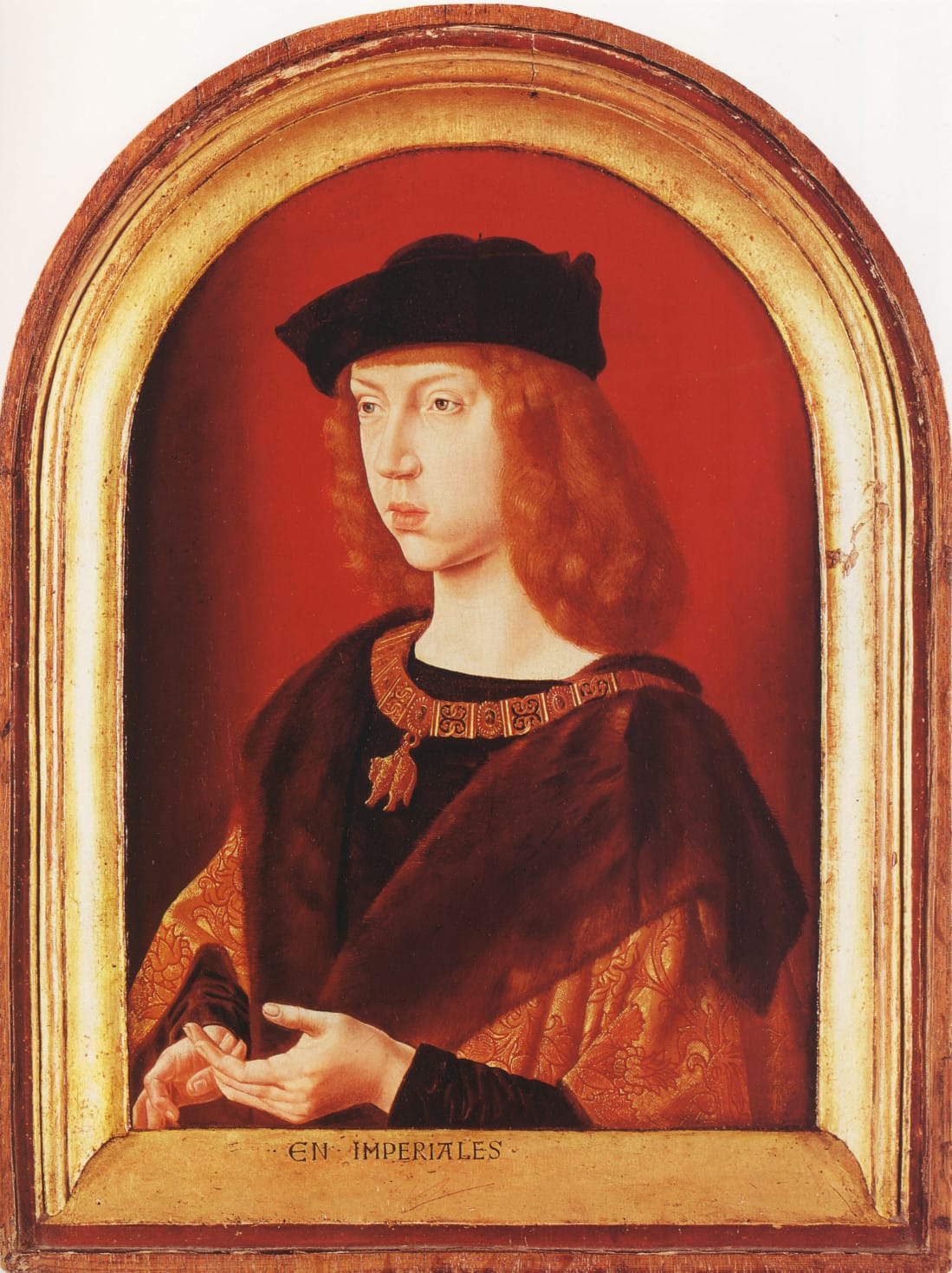
Tournai
One of the sections of stained glass comprising 6 windows in Tournai is attributed to Gauthier. It's not clear if he also painted the glass or provided the designs to another artist. On this project he met and collaborated with Arnold van Nijmegen, a celebrated stained glass artist with whom Gauthier would maintain long term collaborative relations.
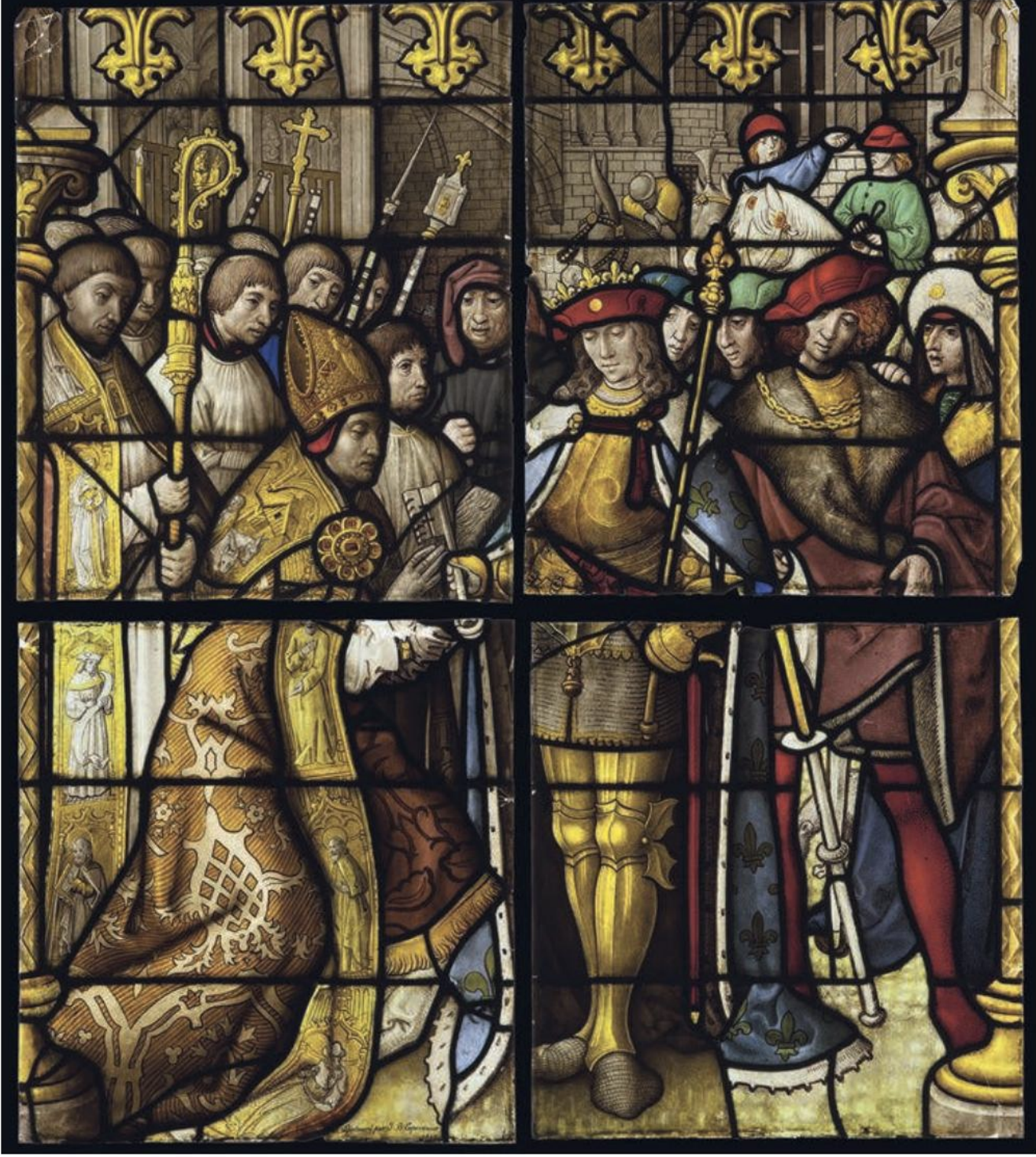
Early career in Paris
By 1499 Gauthier de Campes is documented in Paris, and in 1500 he participated in debates on the architectural design of the new Notre Dame bridge - he would later be commissioned to create "a figure and portrait of the bridge" in 1516. In Aux sources de l'« invention » : Gaultier de Campes, peintre à Paris au début du XVIe siècle French art historian Michel Hérold suggests that this would have been more of a first design sketch rather than a detailed architectural plan.
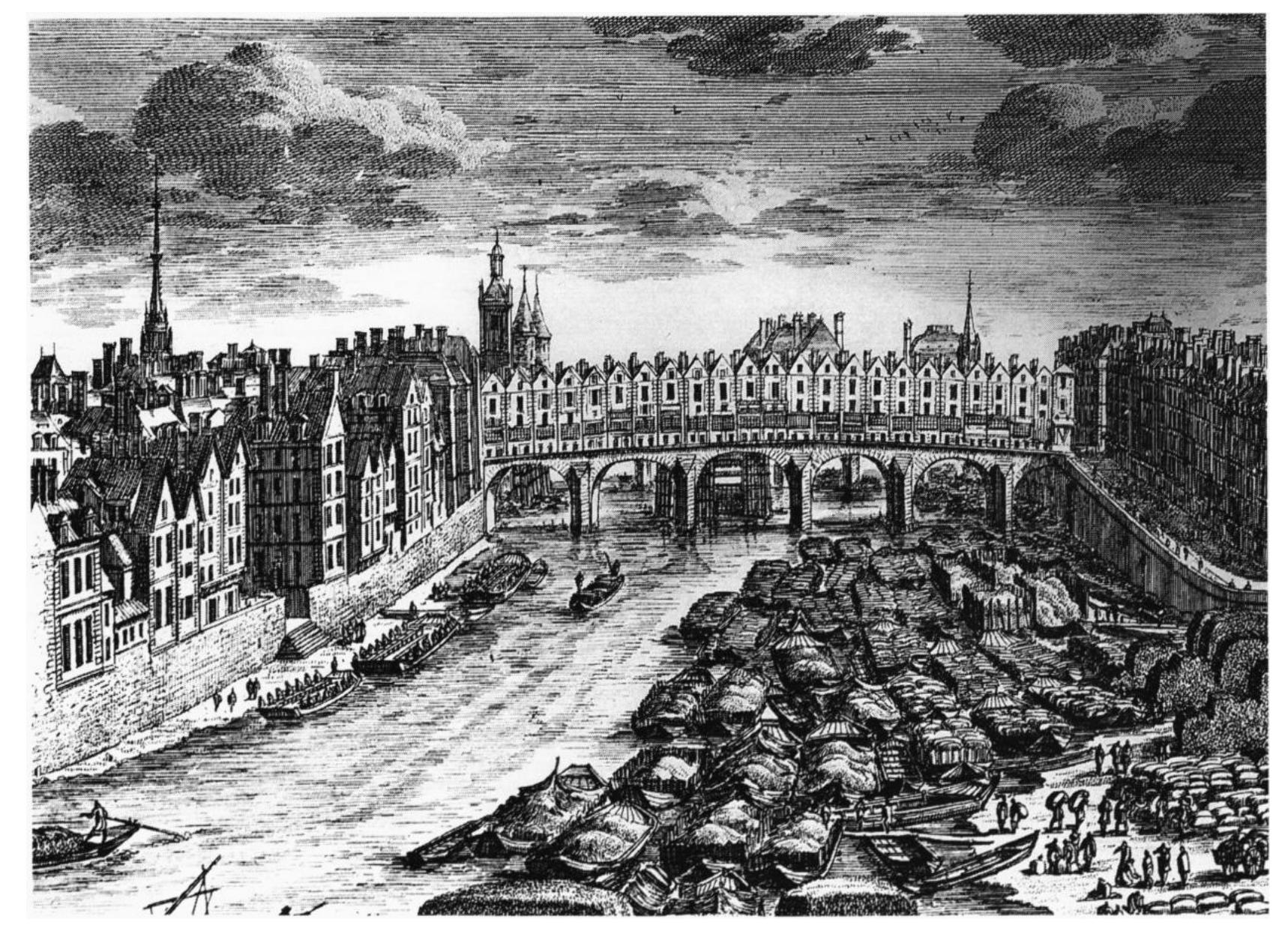
Also in 1499 Gauthier created a drawing for a woven portrait of Robert Gaguin for the church of the Mathurins, which is lost but survives in a print in True Portraits and Lives of Illustrious Men by André Thévet.
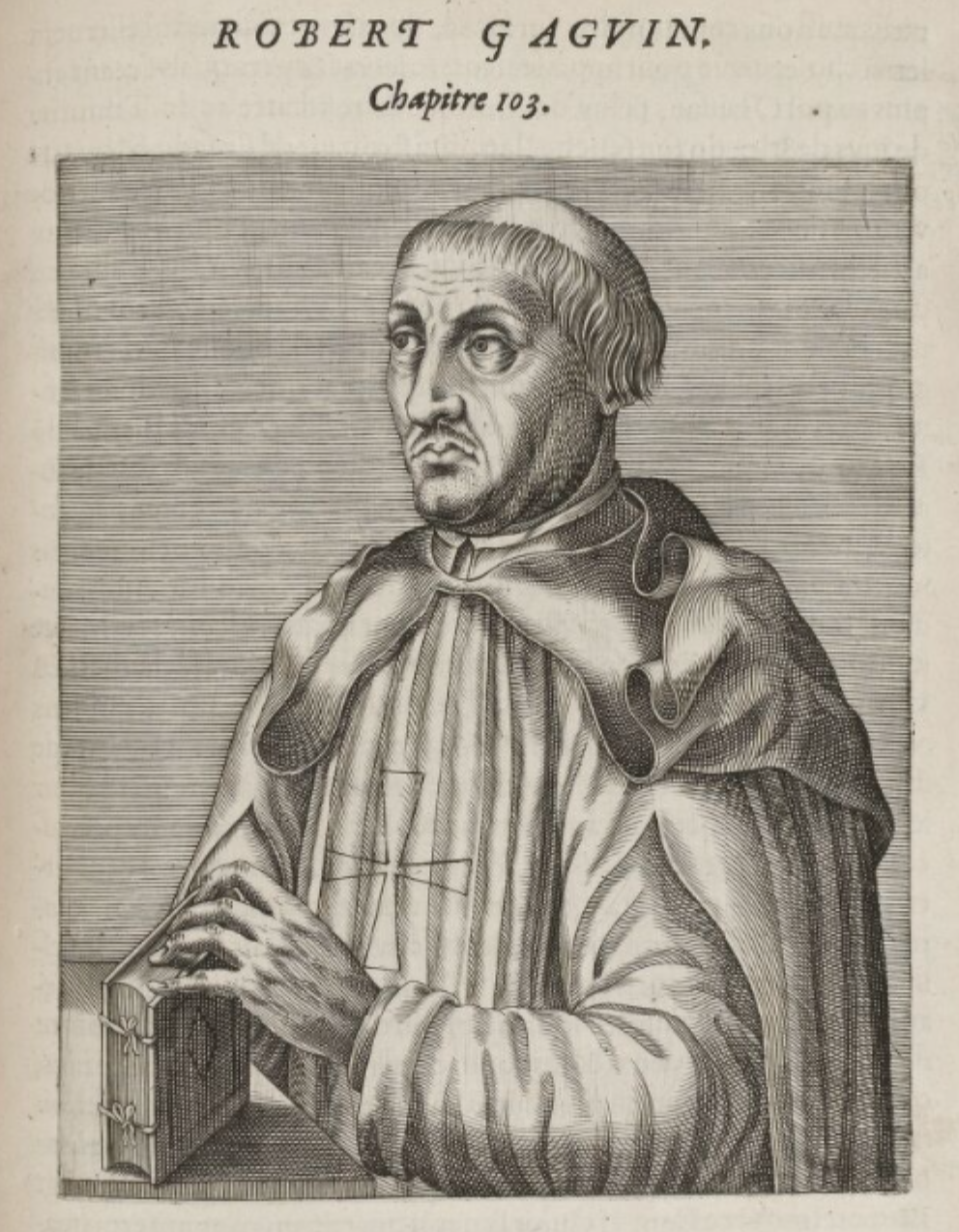
Interestingly, this work was originally "signed", containing a 4 line quatrain that was included in the book which referenced the bridge in Paris:
In my time, the year sixty six
Gautier made me such that I am
One thousand four hundred and ninety nine
When the new bridge fell in Paris
Another commission from his early career in Paris was the design for a stained glass window of The life of St. Paul and St. Aldric for the church of Saint-Pierre and Saint-Paul in Ferrières-en-Gâtinais (Loiret), near Paris. This was commissioned by Abbot Louis de Blanchefort. The coat of arms in the tympanum belongs to the abbot, who passed away in 1507.

Auxerre
Gauthier is attributed with the designs for a series of 12 tapestries of the Story of St. Stephen today in the Musée de Cluny on deposit from Musée du Louvre. These tapestries were commissioned roughly around the year 1500 by Bishop Jean III Baillet for the Auxerre cathedral, and bear his coat of arms. One of the 12 tapestries features a scene with a unicorn. Given that Auxerre is close to Sens, where Gauthier was commissioned for tapestries shortly after 1500, it seems probable to me that around that time is when he completed the work for this commission and that he probably lived in this region for some time, or at least traveled for a long duration.


Scenes from the Story of St. Stephen. Musée de Cluny, on deposit from Musée du Louvre.
Another circumstantial argument for the idea that Gauthier was in this region at this time in person as opposed to sending cartoons from Paris is that in between Sens and Auxerre lies the town of Joigny, where up until recently a portrait of The Virgin and Child with Saint Anne was to be found in the church of St. Jean in Joigny, until it was sadly stolen.
Sens
Between 1503-1506 he is documented as designing a 9-piece set of tapestries of the Life of Saint Stephen for the cathedral of Sens, donated by Archbishop Tristan de Salazar to Sens Cathedral and created in 1517 by Guillaume de Rasse, a well documented and successful tapestry maker. This was a large-scale project, in total these tapestries covered an area of about 128 square meters. During this process he was paid to visit Melun, to study "a beautiful painting that is in the church of Melun, which is part of the martyred invention and translation of Saint Stephen" in order to take inspiration for the design of the tapestries, according to archived documents. Most likely this refers to the Melun Diptych by Jean Fouqet and its medallions depicting scenes from the life of Saint Stepehen - but even if this refers to another work, he almost certainly would have viewed the Melun Diptych as well.
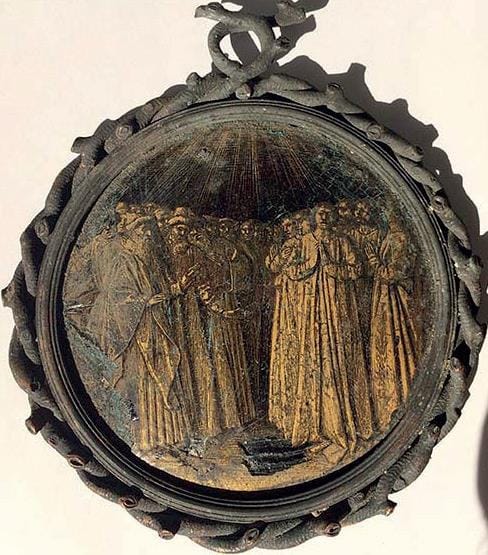
One of the directly documented and dated (1526) works of Gauthier de Campes is a map painted on parchment depicting the Abbey of Faremoutiers and the castle of Pommeuse. This map was originally made as a "figure judiciaire" in the context of a lawsuit before the Parlement de Paris to settle jurisdictional rights between the abbey of Faremoutiers and the seigneurie of Pommeuse. It was recently rediscovered by Raphaele Skupien in the Departmental Archives of Seine-et-Marne. The map is extremely large, measuring 2.65 by 2.25 meters.


This cartographical work was not uncommon for painters at the time. In fact, Gauthier's teacher Jan Fabiaen had received payments from the city of Bruges between 1480 and 1483 for several maps (now lost) which ‘had to show the hydrology of the city’. Gauthier would have at least witnessed this process if not participated himself some 45 years earlier in Bruges.
On the subject of cartography, the artist painted a detailed town in the background of The Mass of Saint Giles. Earlier in the 20th century the town in the background was identified by Montesquiou and Hinkle as Pontoise in France, 32 kilometers north-west of Paris. This was challenged by Lorne Campbell in the catalogue of the National Gallery, and it may be worth further research to confirm the location of the background.

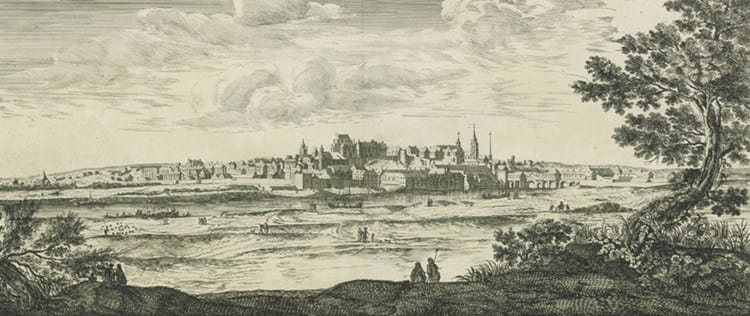
Rouen
From 1515 to 1516 he provided patterns for a stained-glass window in Saint Stephen of the Grand Church Chapel of the Rouen Cathedral, where he again collaborated with Arnold van Nijmegen. Perhaps the donors and/or clergy of the Rouen Cathedral admired the work in Tournai and asked for the same duo to work on their windows. Unfortunately the original windows do not survive.
Reims
Gauthier de Campes designed a series of 17 tapestries for Robert de Lenoncourt, archbishop of Reims and abbot commendatory of the’abbaye Saint-Remi, to decorate the adjoining basilica. The tapestries were hung in the choir during certain religious festivals, illustrating the Life of the Virgin and the life of Saint Remi, bishop of Reims who baptized Clovis. The tapestries were delivered in 1530.
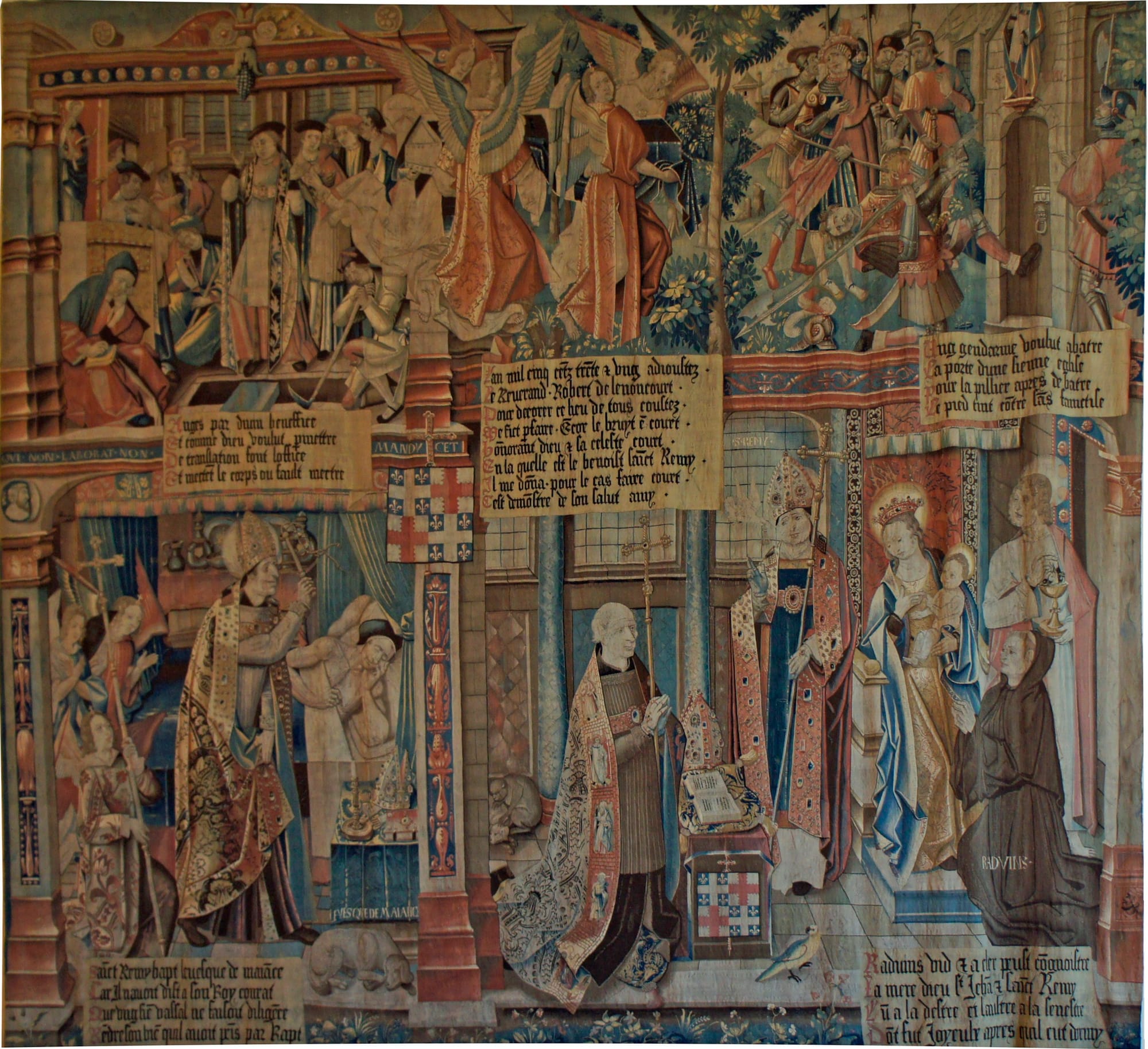

Return to Paris
In 1520 he provided Alard de Souyn, a high-warp tapestry maker, with the designs needed to make a Passion tapestry. Alard was an influential member of the large community of weavers in Paris at the time, and he had a centrally located workshop at the Rue des Nonnains-d’Hyères and Rue de Jouy. Also around 1520 is when he painted two portraits of Guillaume de Montmorency, an important nobleman from Chantilly. One of the paintings is found today in Lyon and one in Écouen.
By this time de Campes' patterns were among the most widespread in France. From tapestries in Saint-Bertrand-de-Comminges near the borders with Spain and Andorra, to Angers, to patterns for stained glass in the west of France in the Angers Cathedral, stained glass windows and tapestries from de Campes' patterns were spread across the country.
One interesting anecdote of the far reaching clientele of de Campes centers on the relationships he had with patrons from southern France. The tapestries in Saint-Bertrand-de-Comminges depicting the Adoration of the Magi and the Nativity and Presentation in the Temple have the coat of arms of Jean de Mauléon, Bishop of Saint-Bertrand-de-Comminges. This highlights the extent of reach of de Campes' workshop, that a bishop 735km away in one of the farthest points from Paris would commission him.
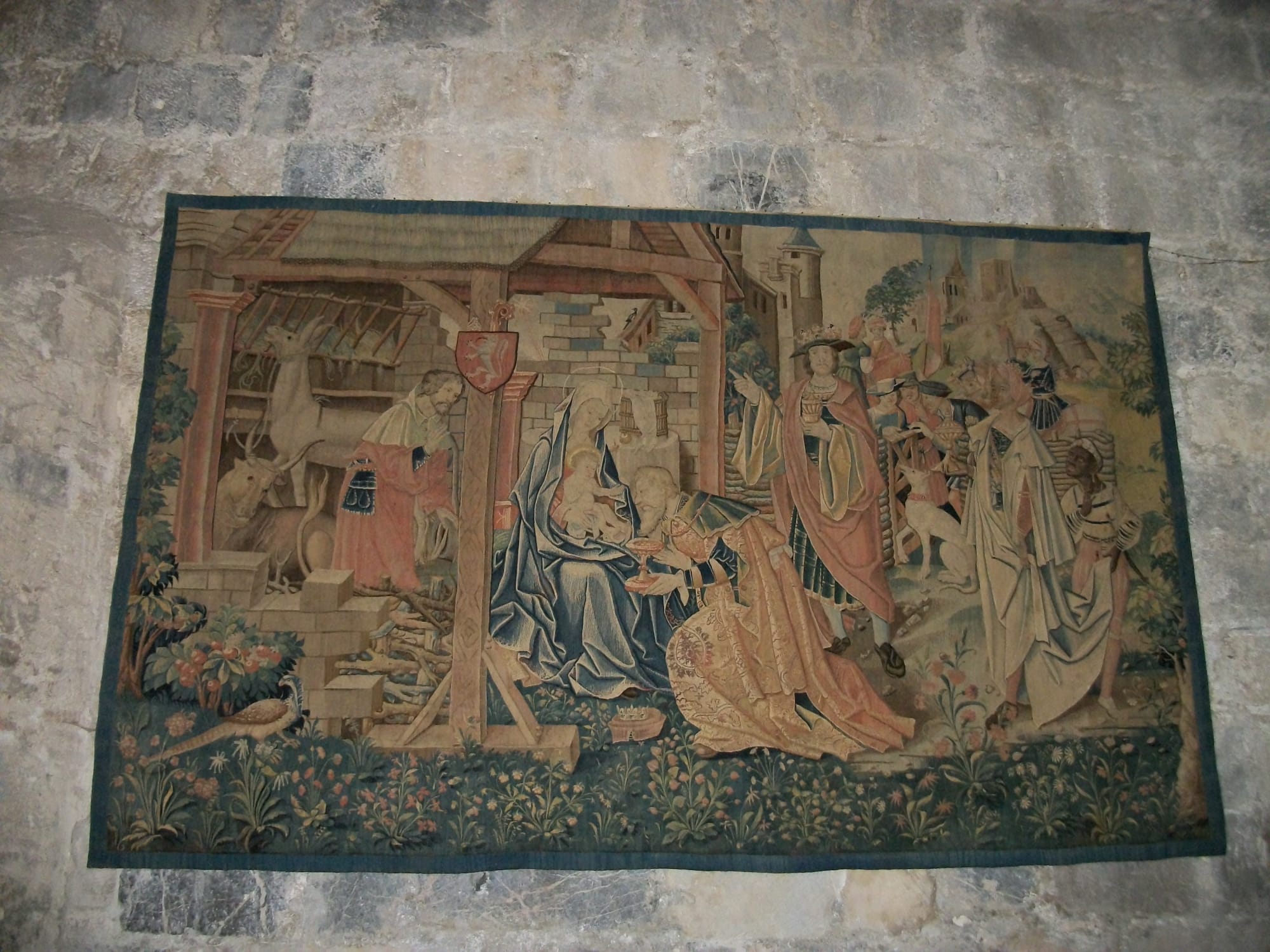

Adoration of the Magi and Nativity and Presentation in the Temple, Cathedral of Saint-Bertrand-de-Comminges
We know that de Campes passed away between November 1530, the last time he is documented, and May 1535 because of the remarriage of his widow Nicole Beranger. The couple had two children. Antoine, a master dyer, and Geoffroy, a garment maker.
Identification and stylistic evolution
The connection of Gauthier de Campes to the Master of Saint Giles was first made in 2001 by Guy-Michel Leproux in La Peinture à Paris sous le règne de François Ier.
The case for identifying the artist as Gauthier is based on an overwhelming amount of specific uncommon pattern usage and the unique style which is shared between his known stained glass works and his paintings. I won't repeat all the examinations discussed in the François Ier article, but one example that is worth mentioning is the very similar monogram/House Mark in the stained glass in Tournai and the grisaille reverse of the eponymous The Mass of Saint Giles.

The main question around attribution that was tied together was the change in style Gauthier displayed over the course of his career, from the traditional Netherlandish style to a an early mannerist style almost as different from earliest to latest works as two separate artists. However, luckily there are stepping stones in between these changes, and we can observe his style progress over his 50 year career in a coherent way. This stylistic evolution is not uncommon for artists working on both sides of the turn of the century, as the shift in taste moved rapidly in the broadly mannerist direction and almost all artists adjusted their styles to various extents. In doing this Guy-Michel Leproux connected this artist with two other lesser known notnames, the Master of the Privileges of Tournai and the Master of Montmorency, to create a holistic basis for the identity of the artist. Prof. Elsig notes that at the end of his career, although significantly stylistically evolved from his days in Bruges, Gauthier did not fully adopt the Italian influences that became prevalent in Northern Europe.
The other evolution made by the artist was the changing of primary media, transitioning from an artist who mostly painted on wooden panels to an artist whose main output was essentially large-format drawings for the design of stained glass and tapestries. As noted by Prof. Frédéric Elsig, this is probably an adjustment to the economic demands of the market for art in France during the first quarter of the 16th century.
Art Historical Reception
Art historians since Charles Sterling have classified three periods of work by de Campes, with the first period roughly from 1480-1500, the second from around 1495-1505, and third from the 1505-1530. There have been disagreements on the dating of certain works, but overall this is a helpful framework to think about the stylistic evolution of the artist.
Early art historical analysis of the artist was heavily focused on the panels from the Mass of Saint Giles altarpiece. Although those panels are no doubt some of the best works by this artist, there are many other masterpieces of the first order in the oeuvre that merit attention. The portraits in Chantilly and Winterthur are, in my opinion, as good as just about any portraits of the period.
Another point which I think has been overly focused on is French versus Flemish influence, and trying to put the artist in one box. Gauthier de Campes was an artist with family ties in Tournai, trained in Bruges, with a later career in several areas of France. We have enough surviving information about his life that the evidence doesn't require further interpretation in my view. Additionally, the artist evolved stylistically throughout his career so much that any one classification is bound to fall short.
Since the early days of art history, the quality and caliber of the artist's work has been widely accepted. The artist was first identified by Hugo von Tschudi in 1894. We've already seen in the introduction that Max J. Friedländer thought highly of the artist. Another great art historian of the 20th century who studied this artist was Charles Sterling.
Charles Sterling writes that the artist was familiar and steeped in the Bruges school of painting as well as bearing influence from Hugo van der Goes:
The Master of Saint Gilles was an artist who most likely originated from the Southern Netherlands, probably trained in Bruges and perhaps also in Ghent, under the influence of Hugo van der Goes and Gérard David. This dual pictorial culture was already observed by H. von Tschudi (1893, p. 106), while the artist's knowledge of the Judgement of Cambyses painted by David and dated 1498 was firmly established by J. Held (1932). On the other hand, the textual borrowing from Memling of a Virgin holding the Christ Child, observed for the first time here (Fig. 234), confirms the painter's familiarity with Bruges art.
In the The Robert Lehman Collection. Vol. 2 Sterling et al. notes a connection between the Lehman Virgin and Child with a Dragonfly and models from the workshop of Dieric Bouts:
The Bouts motifs assimilated by the Master of Saint Giles indicate that he had direct knowledge of Bouts's late Madonna and Child compositions of about 1470-75/3 suggesting that the Lehman painting was probably executed in the last decades of the fifteenth century. (Although Dieric Bouts died in 1475, his workshop in Louvain continued under the direction of his two sons, Dieric the Younger and Aelbert.) That date is supported by the dendrochronological evaluation, which indicates that the painting was created in 1483 at the earliest.
About the technique and style of the artist, Sterling writes:
His modeling of faces, hands, vegetation, and the texture of every inanimate object is of a precision and sensitivity rarely equaled by the best Flemish painters, his contemporaries. His coloring is both decoratively rich and balanced. All this gives the impression that his art was familiar with the circle of miniaturists, that he himself may have practiced illumination.
Whatever the influence of taste and, perhaps even, of French art, which he absorbed in Paris, he remains fundamentally Flemish. He is so above all in his insistent attention to detail; in the desire to be scrupulously complete in the rendering of reality
In the catalogue for the National Gallery of Washington DC, Early Netherlandish Painting, The Collections of the National Gallery of Art Systematic Catalogue, John Oliver Hand and Martha Wolff write:
The work of the Master of Saint Giles, like that of Michel Sittow, the Master of Moulins, or, in part, of Joos van Gent, represents an international extension of the Netherlandish school.
Complete Oeuvre (panel paintings)
There is much that can be written about each of the works in the oeuvre, for that I recommend La Peinture Médiévale à Paris, Volume II by Charles Sterling (which features one of de Campes' works on the cover), available for free at archive.org.

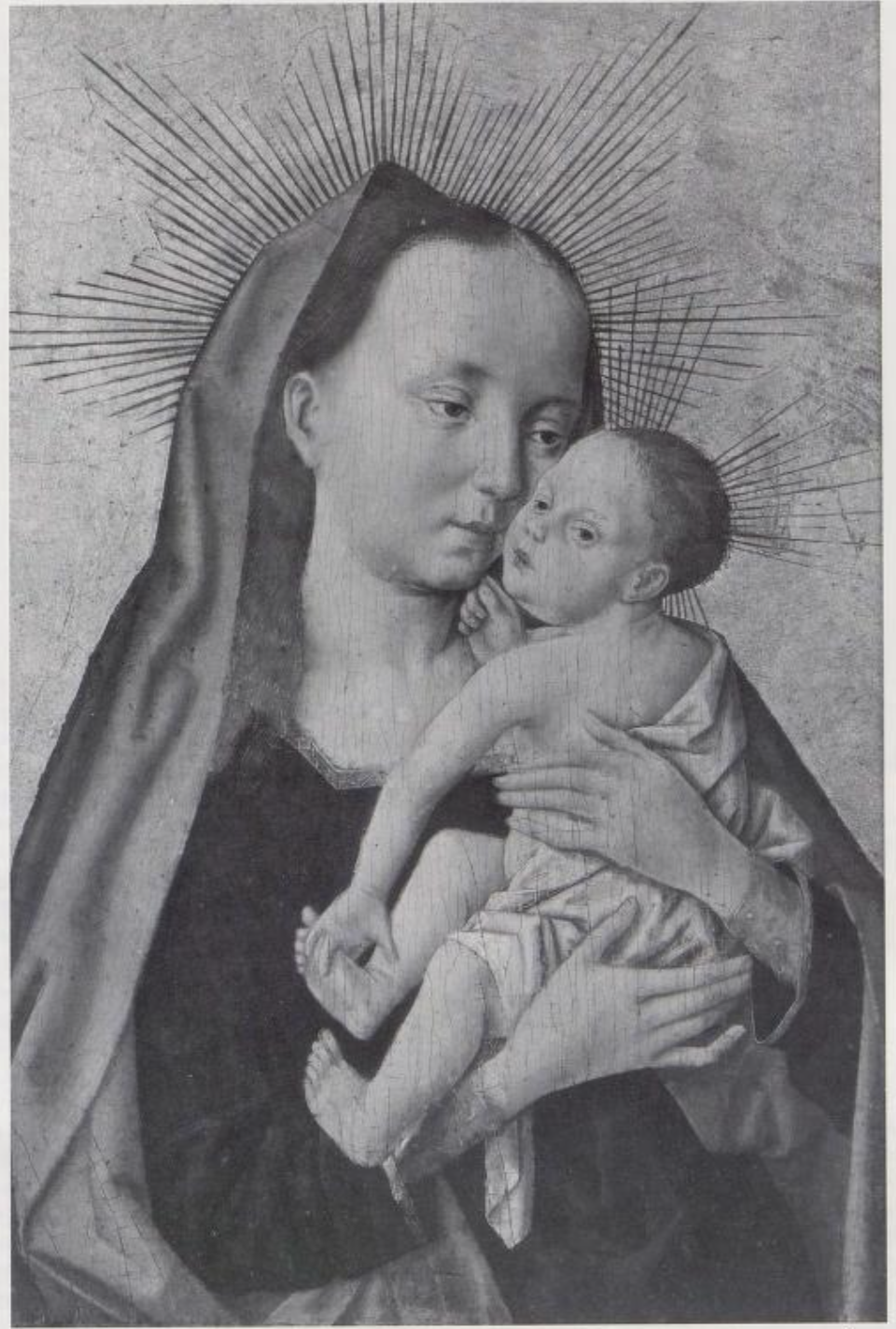
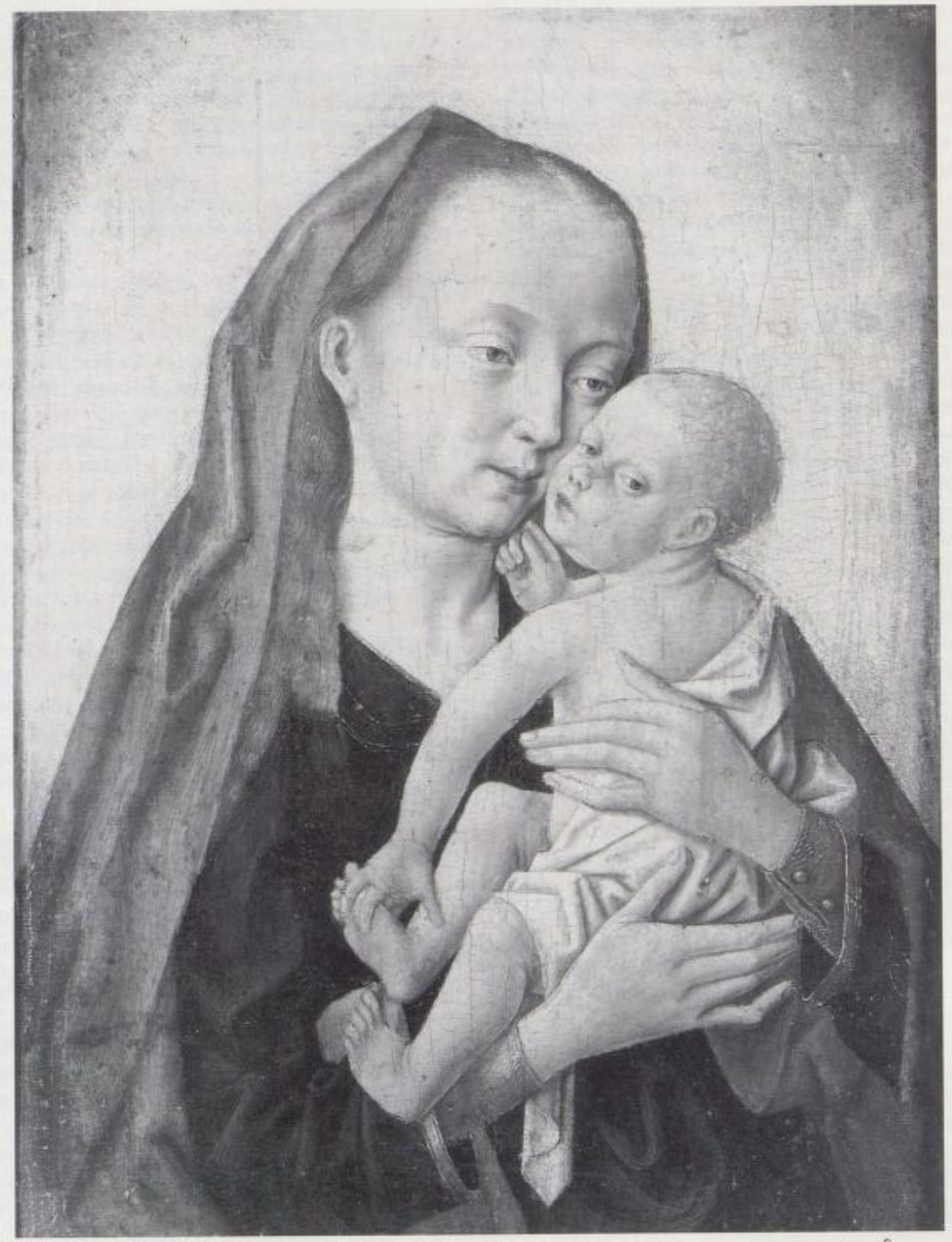
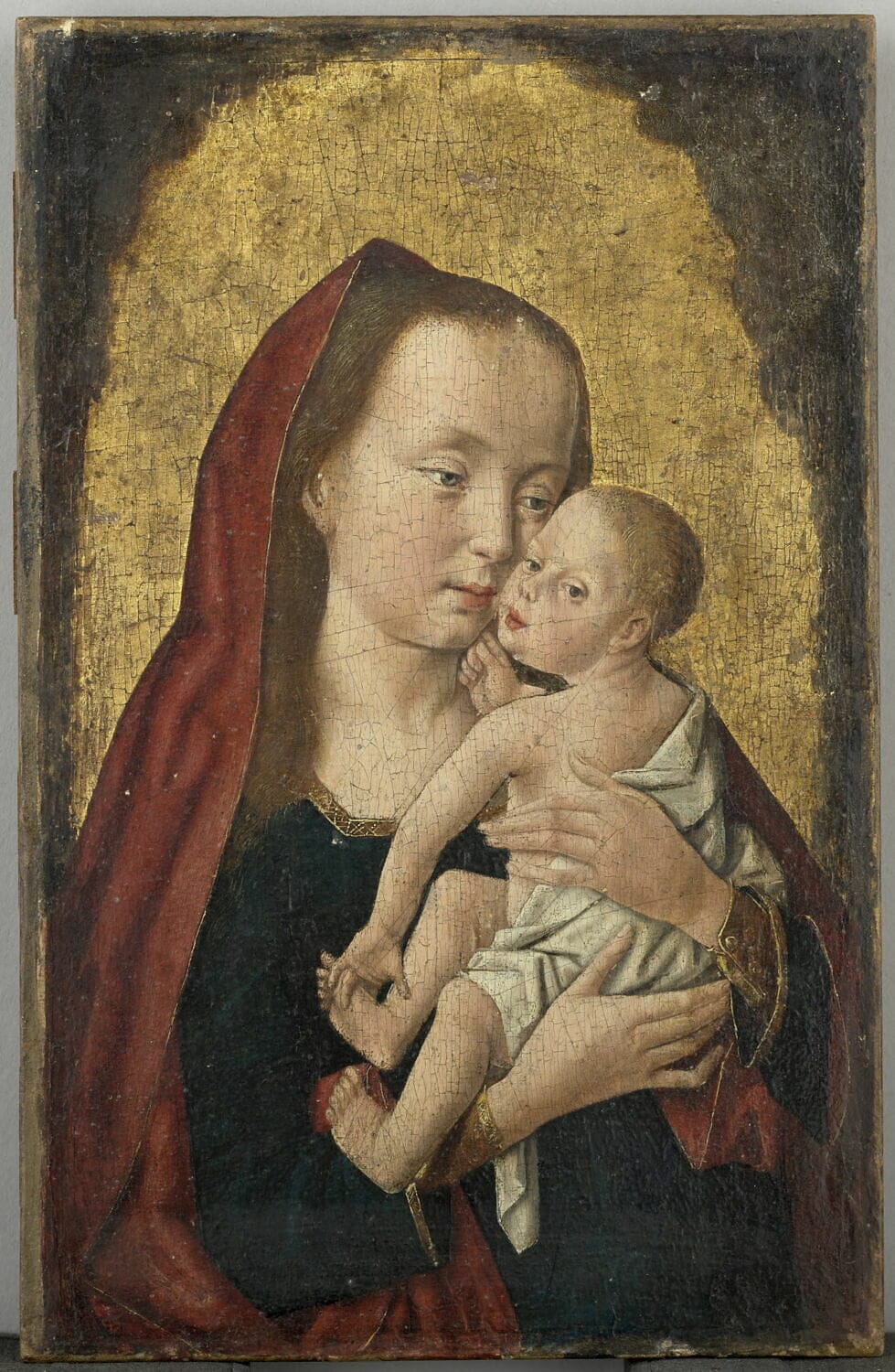

Virgin and Child compositions



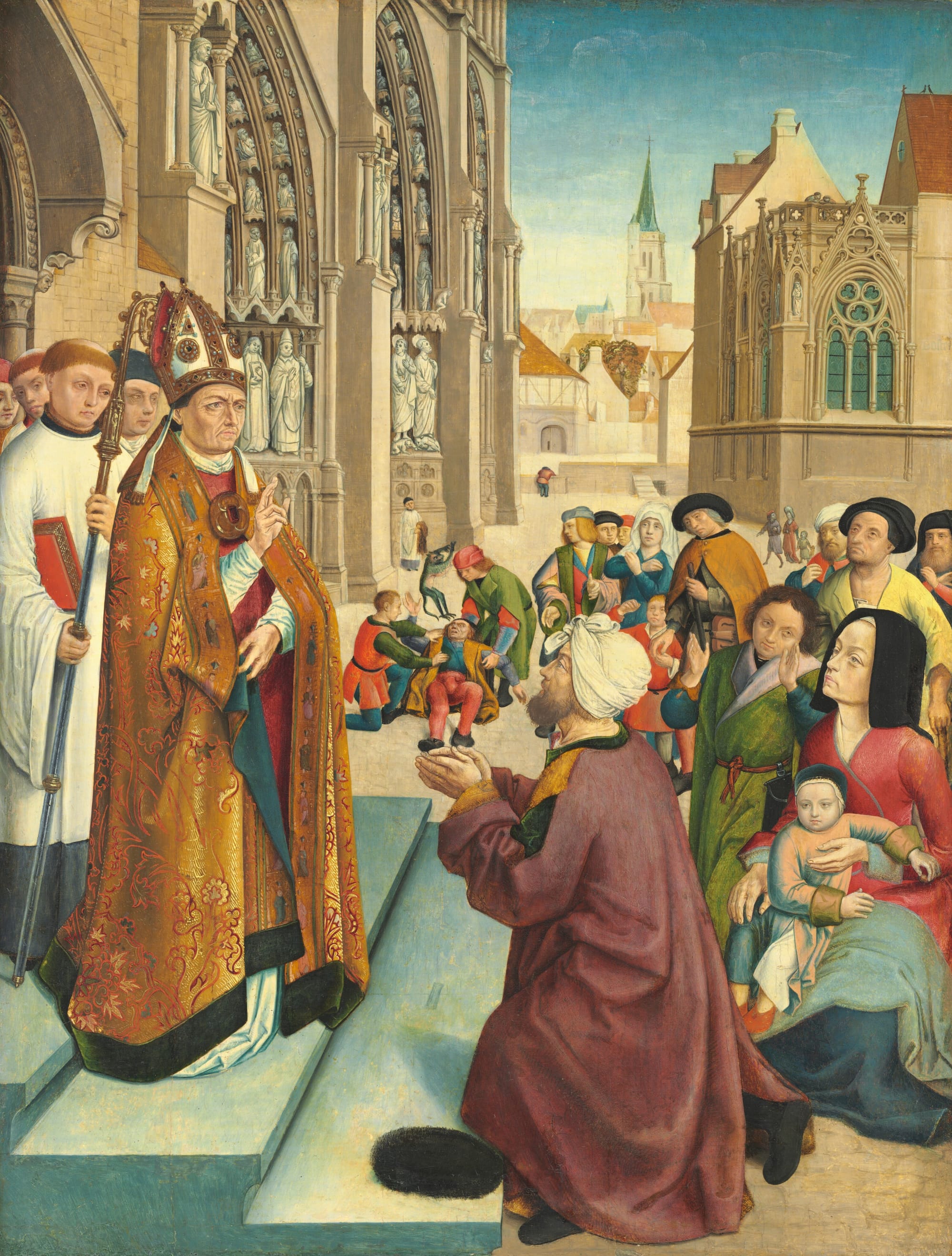
The Mass of Saint Giles Altarpiece panels (recto)

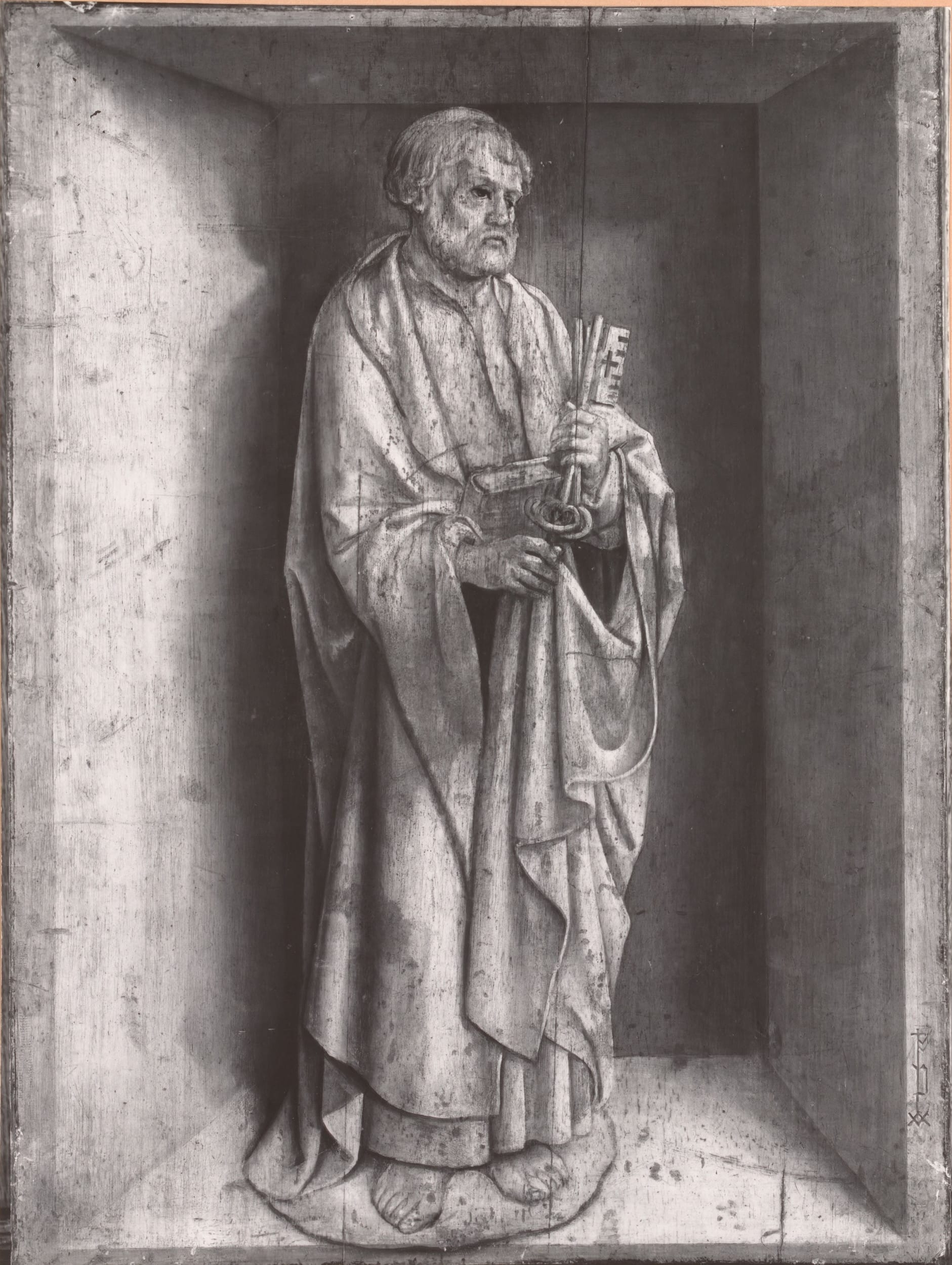
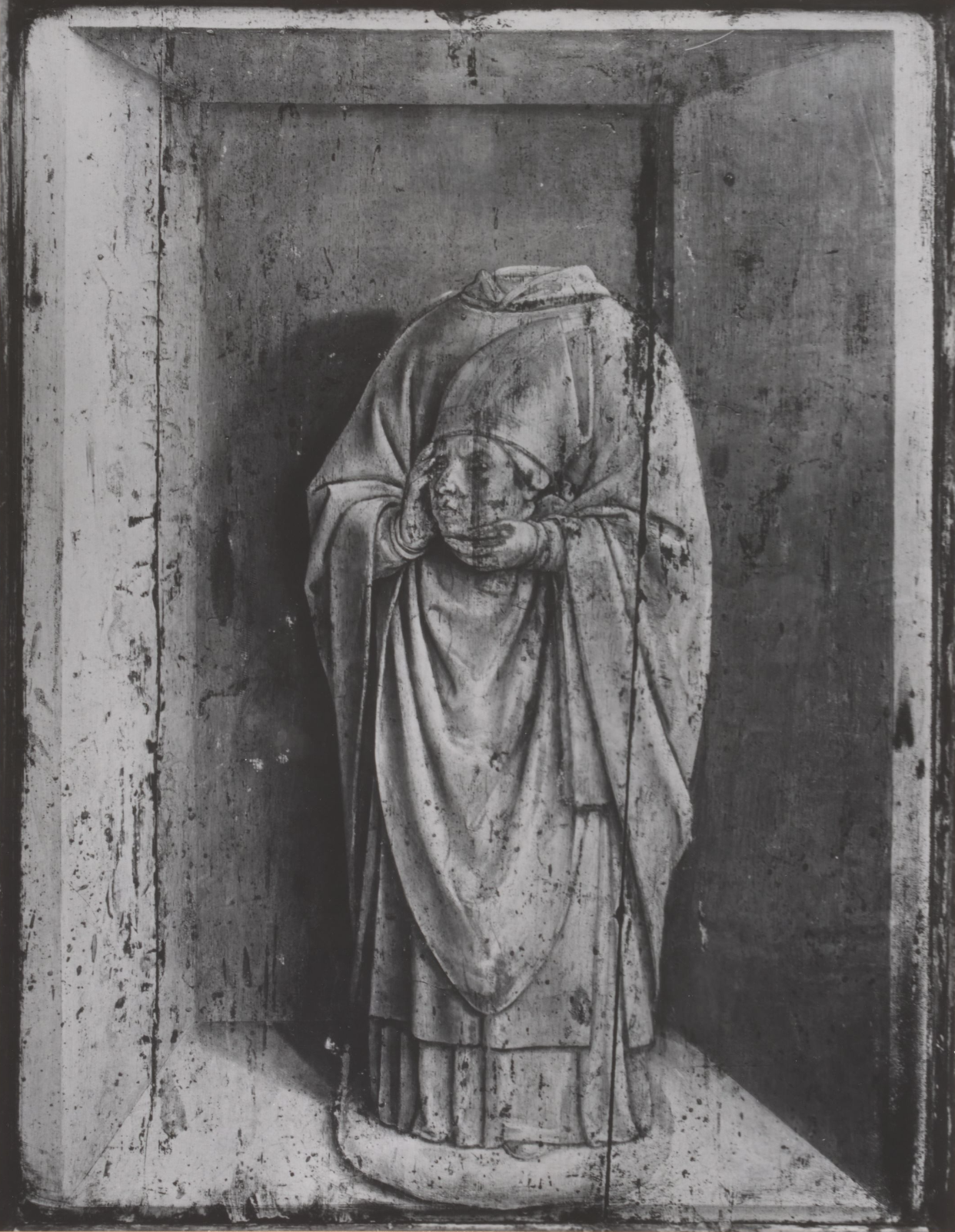
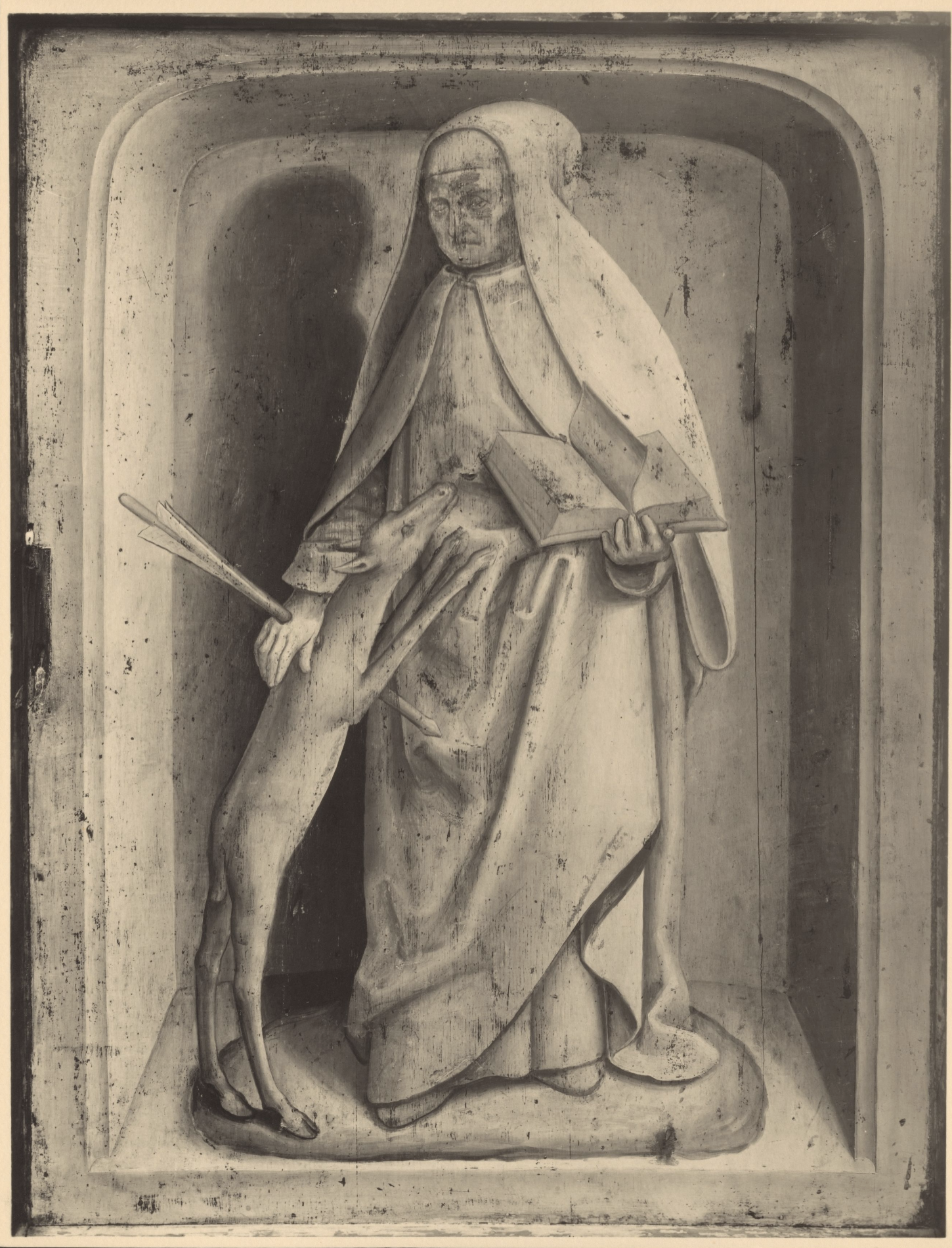
The Mass of Saint Giles Altarpiece panels (verso)
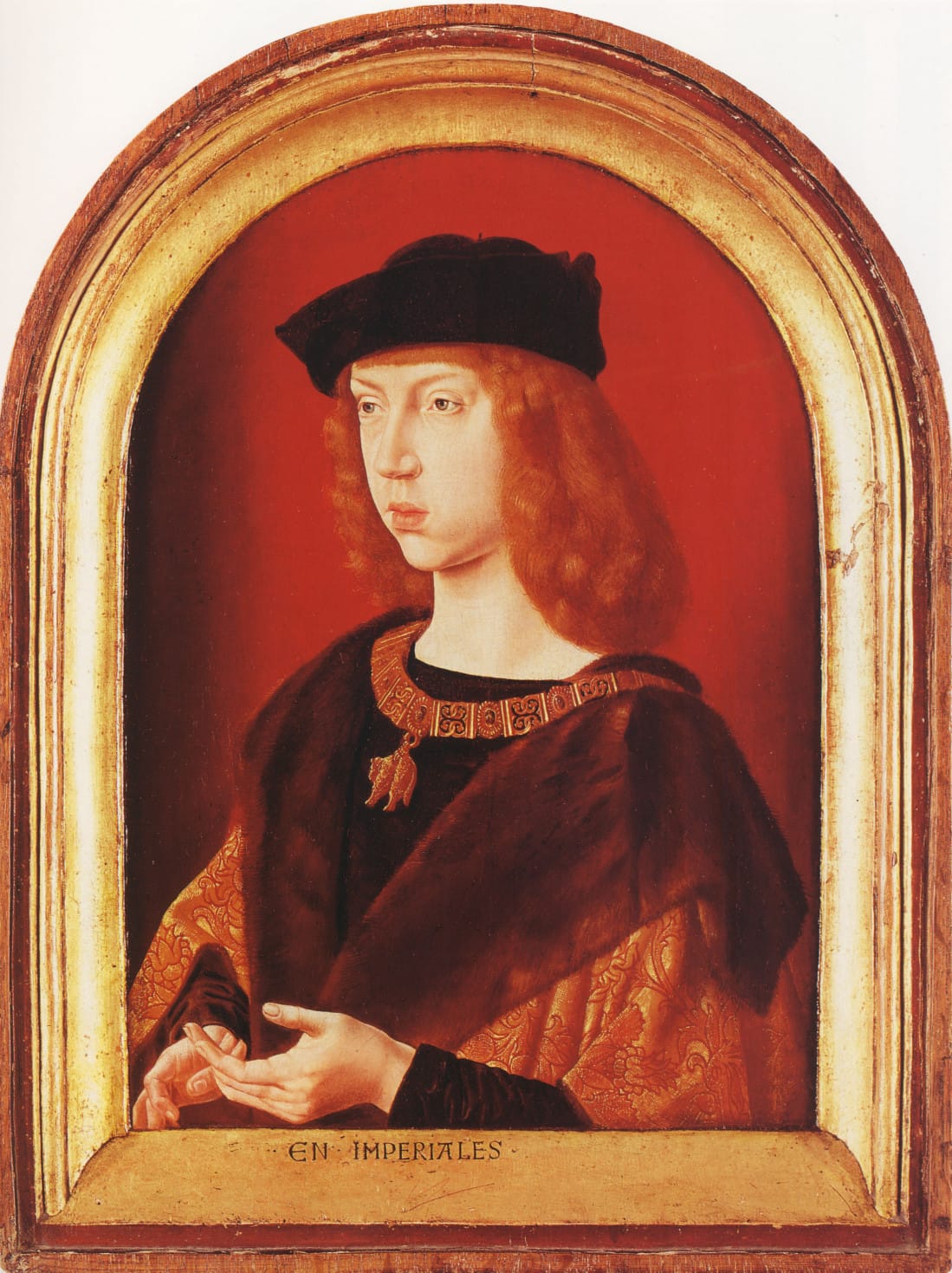
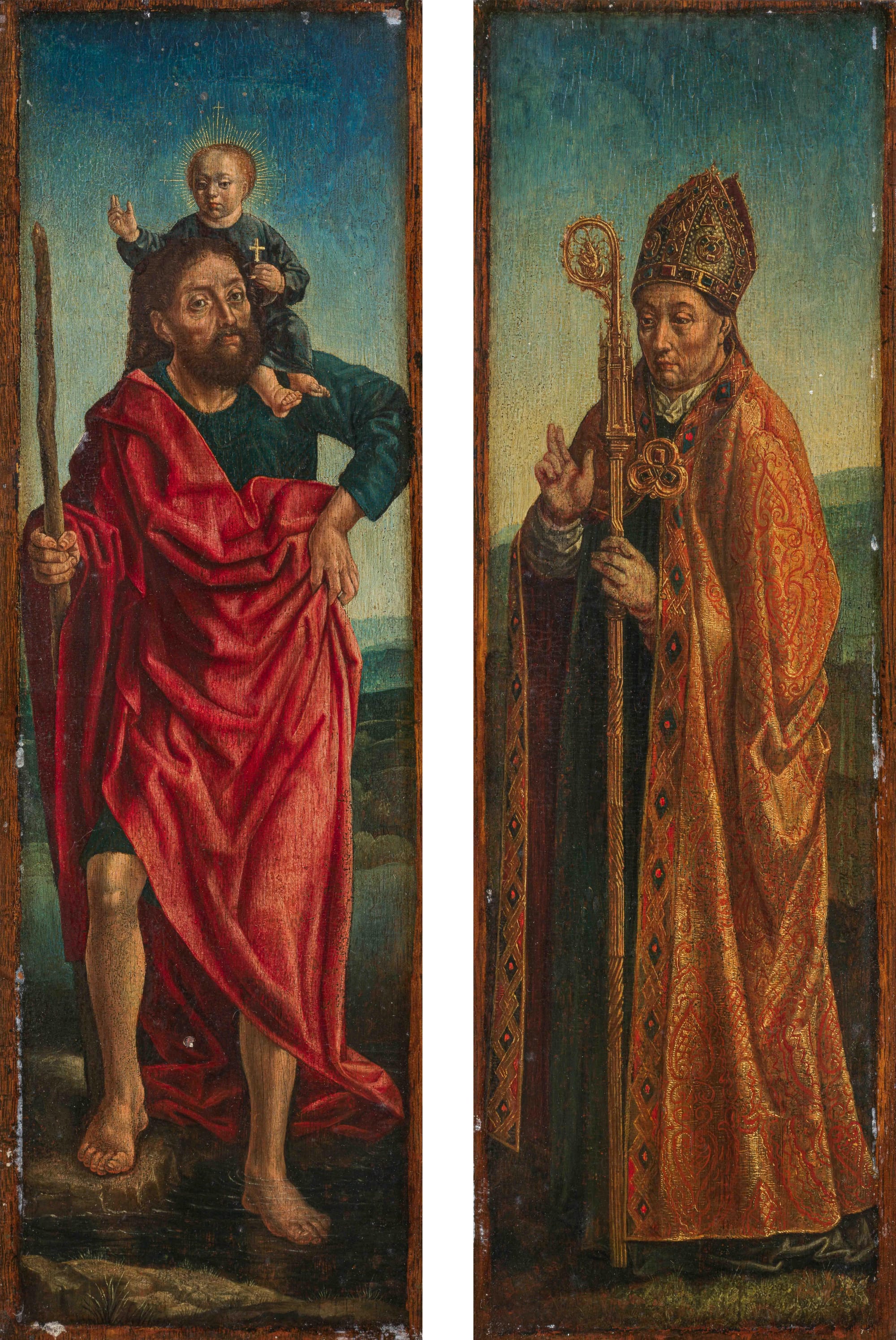
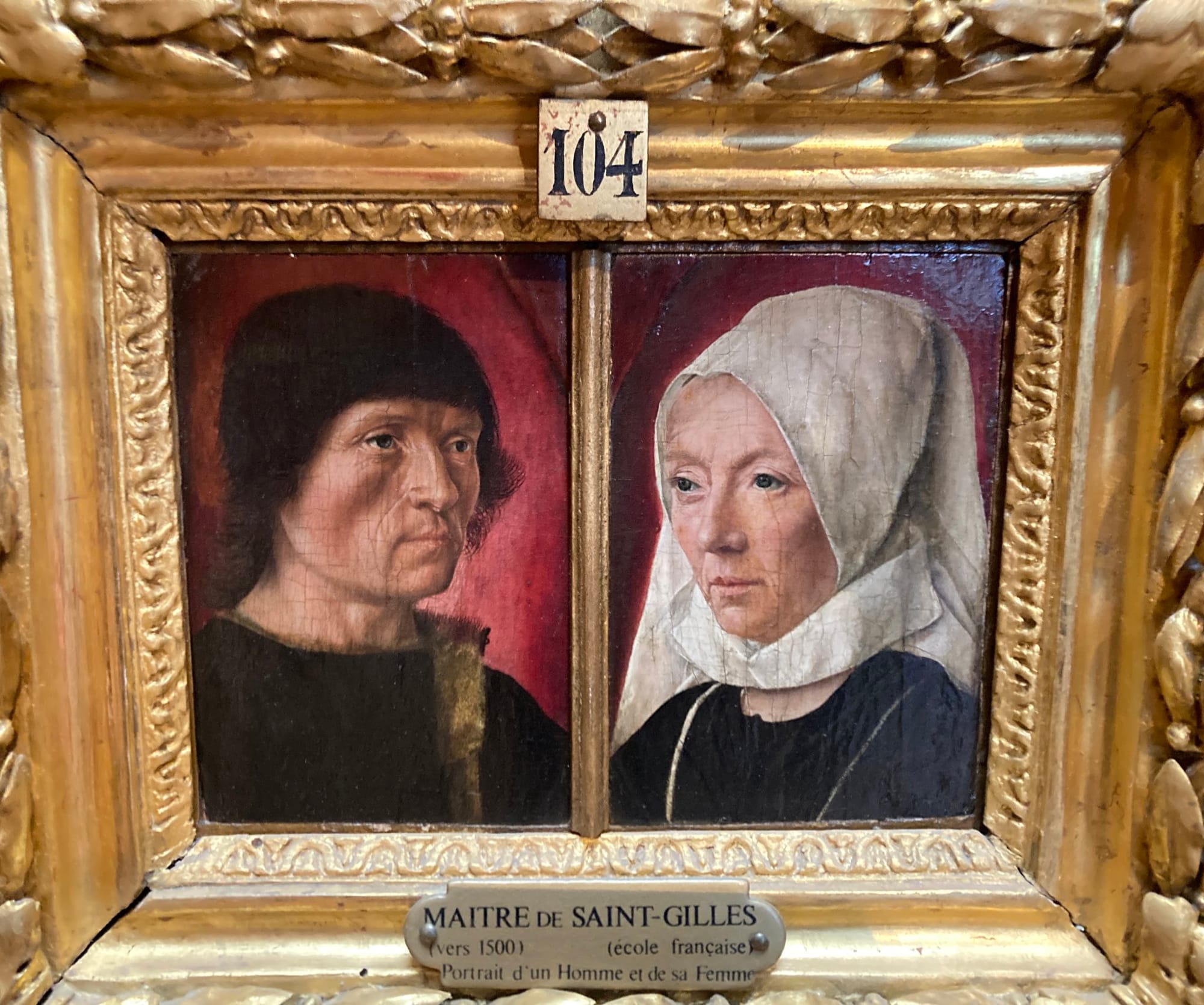


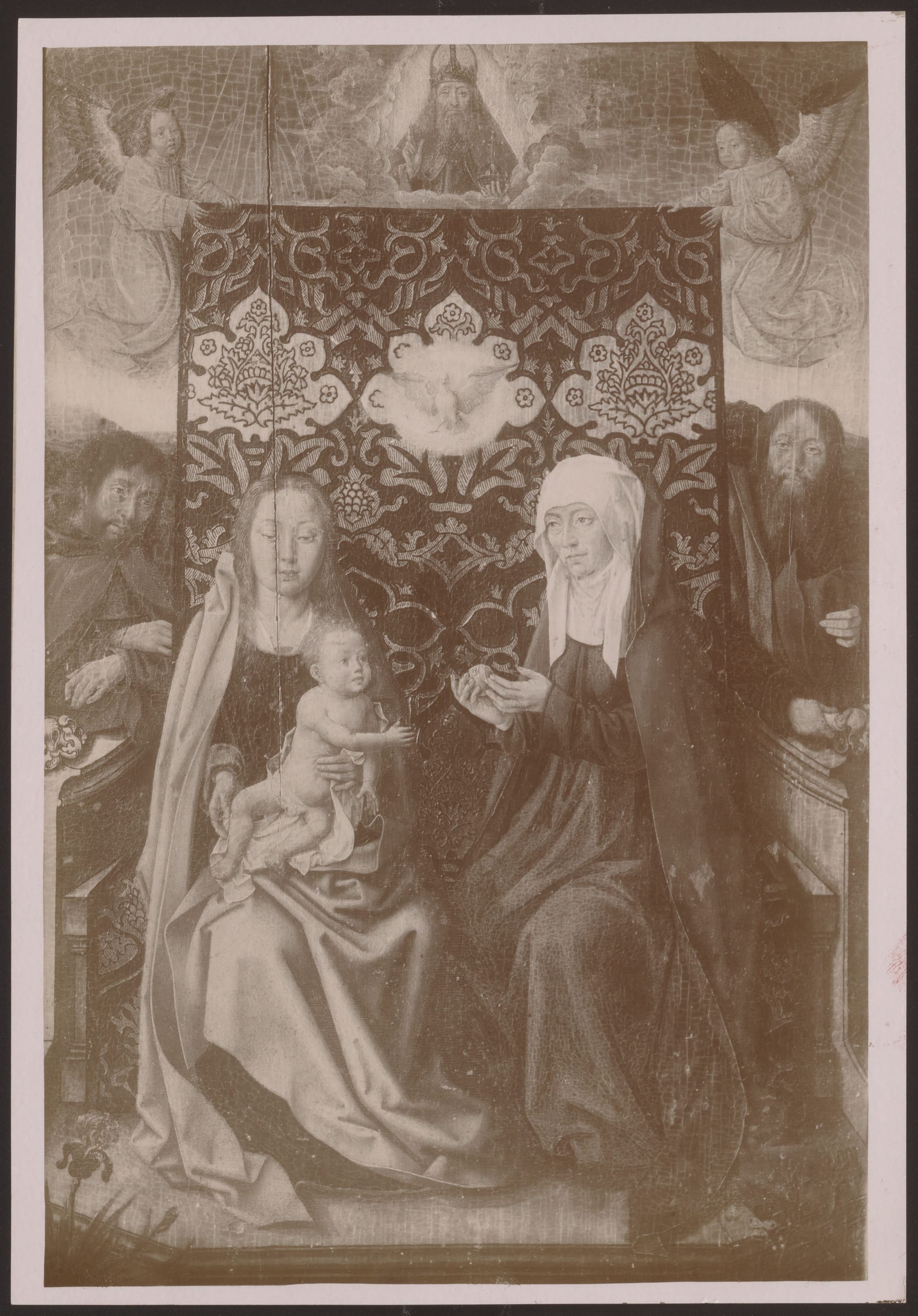

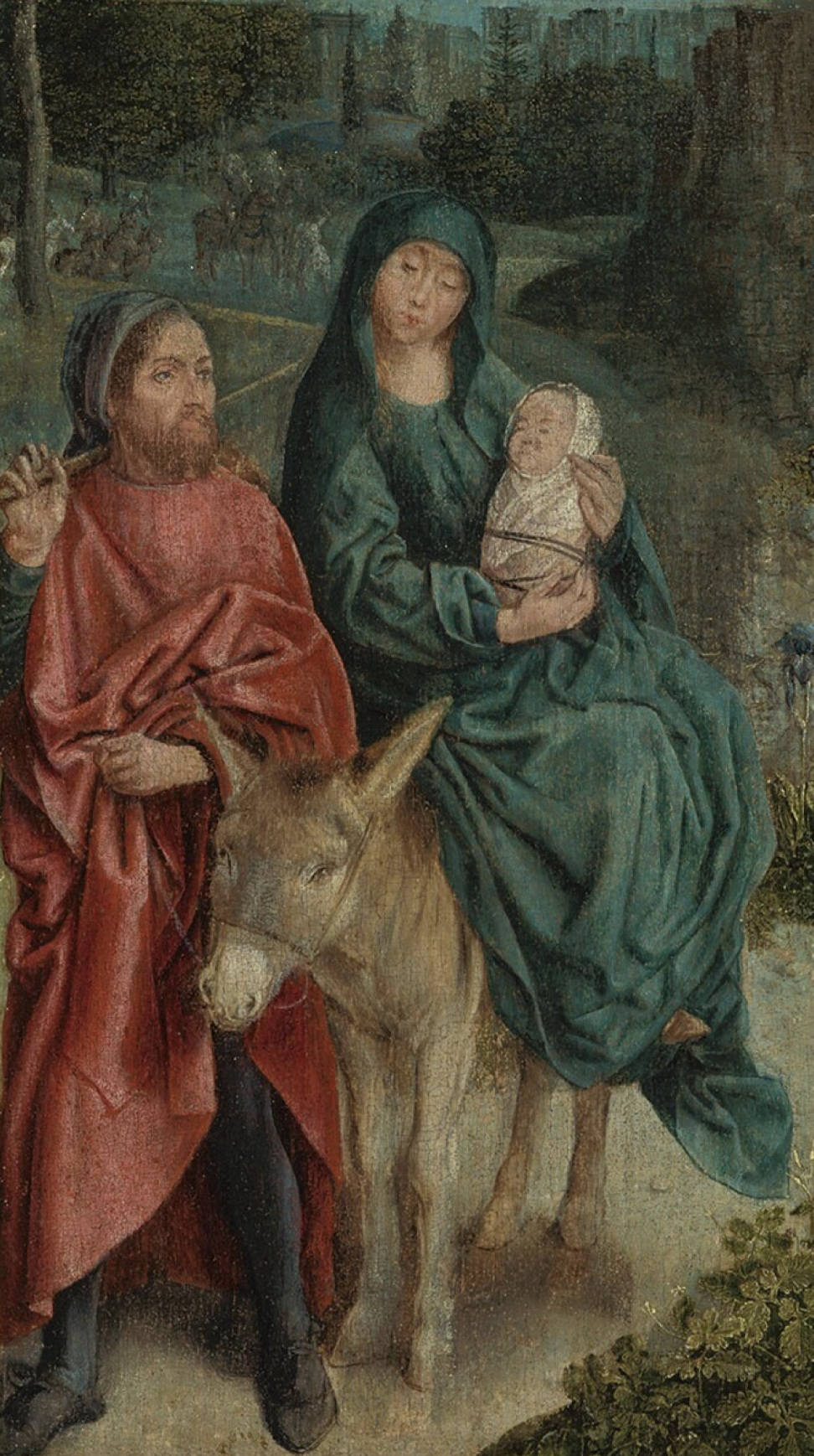

Works roughly from the early/middle period ~1490-1505
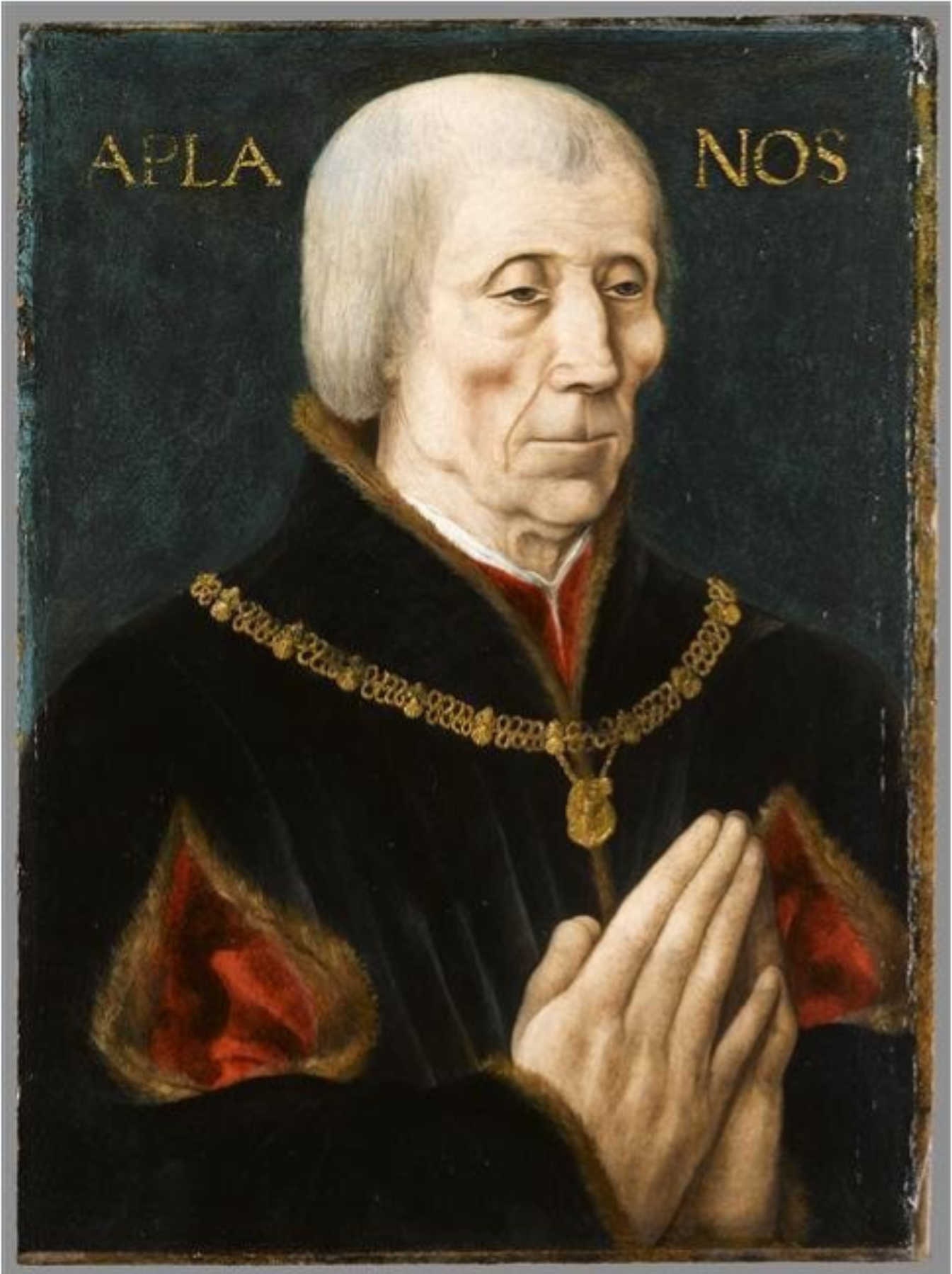

Guillaume de Montmorency portraits (later career)
Further readings
- Max J. Friedländer, Le Maître de Saint-Gilles, Gazette des Beaux-Arts, 1937.
- John Oliver Hand and Martha Wolff, Early Netherlandish Painting, The Collections of the National Gallery of Art Systematic Catalogue, 1986
- Charles Sterling, La Peinture Médiévale à Paris, Volume II, 1991.
- Charles Sterling et al., The Robert Lehman Collection. Vol. 2, Fifteenth- to Eighteenth-Century European Paintings: France, Central Europe, The Netherlands, Spain, and Great Britain, 1998.
- Michel Herold, Aux sources de l'« invention » : Gaultier de Campes, peintre à Paris au début du XVIe siècle, 1998.
- Guy-Michel Leproux, La peinture à Paris sous le règne de François Ier, Presses Paris Sorbonne, 2001.
- Étienne Hamon, Documents du Minutier central des notaires de Paris. Art et architecture avant 1515, 2010.
- Sacha Zdanov, Quelle identité pour le Maître de la légende de Sainte Lucie, 2013.
- Lorne Campbell, The Sixteenth Century Netherlandish Paintings with French Paintings before 1600, 2014
- Pierre-Gilles Girault, Cartonniers de tapisseries à Bruges et Paris vers 1500 : Jan Fabiaen et Gauthier de Campes, 2020.
- Frédéric Elsig, Remarques sur Arnoult de Nimègue et Gauthier de Campes, 2022.
- Raphaële Skupien, Faremoutiers et Pommeuse vus par le peintre Gauthier de Campes en 1526, 2022.
- Rafaël Villa, Propositions pour Jean Chastellain et le vitrail Parisien, 2023.
- Oliver Kik, Mapping the wet land. The Painter-cartographer in the Low Countries, 1480-155, 2023.
- Frédéric Elsig, La persistance des traditions locales : le cas de Gauthier de Campes, 2025.
- Pierre-Gilles Girault, De Bruges à Blois, Gauthier de Campes et le Maître de saint Gilles, 2025.
